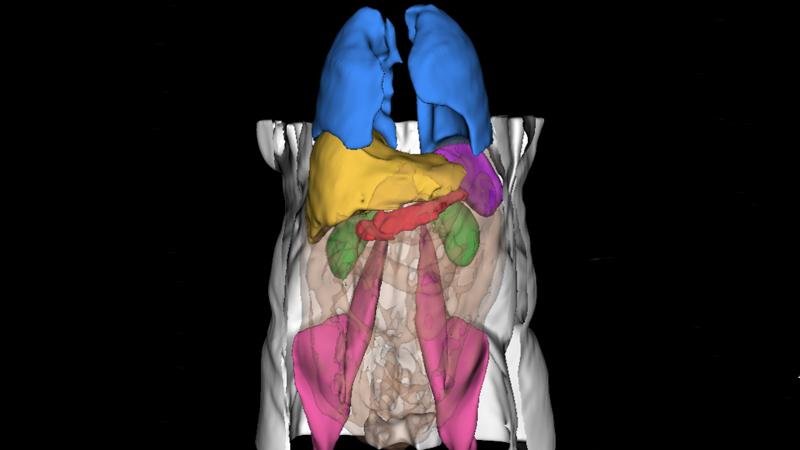Research from the University of Westminster in collaboration with Calico Life Sciences has revealed that the severity of COVID-19 infection is associated with body composition.

Results of the severity analysis using the first set of images have shown that having elevated visceral fat and liver fat, as well as a smaller iliopsoas muscle volume (the major mover of the hip joint) made severe disease more likely. Predictive modelling showed that visceral fat was the most important contributing factor to disease severity, even compared with factors like age and BMI, which have been shown to increase the risk of severe COVID-19 symptoms.
The UK Biobank is a large-scale database and research resource which contains in-depth genetic and health information from half a million UK residents. The study led by Westminster researcher Dr Nicolas Basty used MRI (Magnetic Resonance Imaging) scans from 1,880 UK Biobank participants, taken from when they first joined the UK Biobank as well as a second set of images acquired in 2021 as part of the UK Biobank COVID-19 re-imaging study. Of the MRI scans used in the study, 967 were from participants who had recovered from COVID-19, and the remaining 913 participants did not have the disease.
Additional baseline scans of 140 UK Biobank participants who had severe COVID-19 symptoms and were not part of the re-imaging study were used to enrich severity analyses. The images cover the body from the neck to the knee, which allowed the researchers to measure the volume of abdominal organs, body fat and muscle, as well as measuring the fat and iron content of the pancreas and liver.
The team investigated the longitudinal changes before and after COVID-19, and whether body composition prior to COVID-19 was indicative of disease severity. The longitudinal analysis showed that lung volume decreased in participants that had COVID-19, while other measurements did not change.
This unique study provides comprehensive data before and after the disease, making it more reliable compared to previous research. Most imaging studies that have been conducted previously have mainly focused on people who have been hospitalised due to COVID-19 and have had no baseline scan to analyse. Therefore, it is impossible to know what their body composition was like before the patient contracted the virus.
The researchers hope that their findings will help to shed light on why men, who accumulate more visceral fat than women, appear to be more at risk of severe COVID-19 symptoms. The study may also help to identify people at particular risk of severe disease and therefore identify who would benefit most from interventions and vaccination programmes.
Talking about the new research, Dr Nicolas Basty, Research Fellow from Westminster’s School of Life Sciences and joint first author, said: “We have been working on the UK Biobank abdominal MRI data for the past few years, so we are happy to have been able to apply our image processing body composition analysis expertise to this unique set of COVID-19 re-imaging scans and to contribute to the understanding of the disease. The UK Biobank, thanks to its participants, did a fantastic job of setting this additional sub-study up in such a short period of time within their already ground-breaking population study.”
The study, entitled ‘Abdominal Imaging Associates Body Composition with COVID-19 Severity’ was conduced by Dr Nicolas Basty, Dr Marjola Thanaj, Dr Brandon Whitcher, Professor Jimmy Bell and Professor Louise Thomas from the Research Centre for Optimal Health at the University of Westminster, in collaboration with Dr Elena Sorokin, Dr Ramprakash Srinivasan and Dr Madeleine Cule from Calico Life Sciences.
Read the full preprint on the Medrxiv website.


